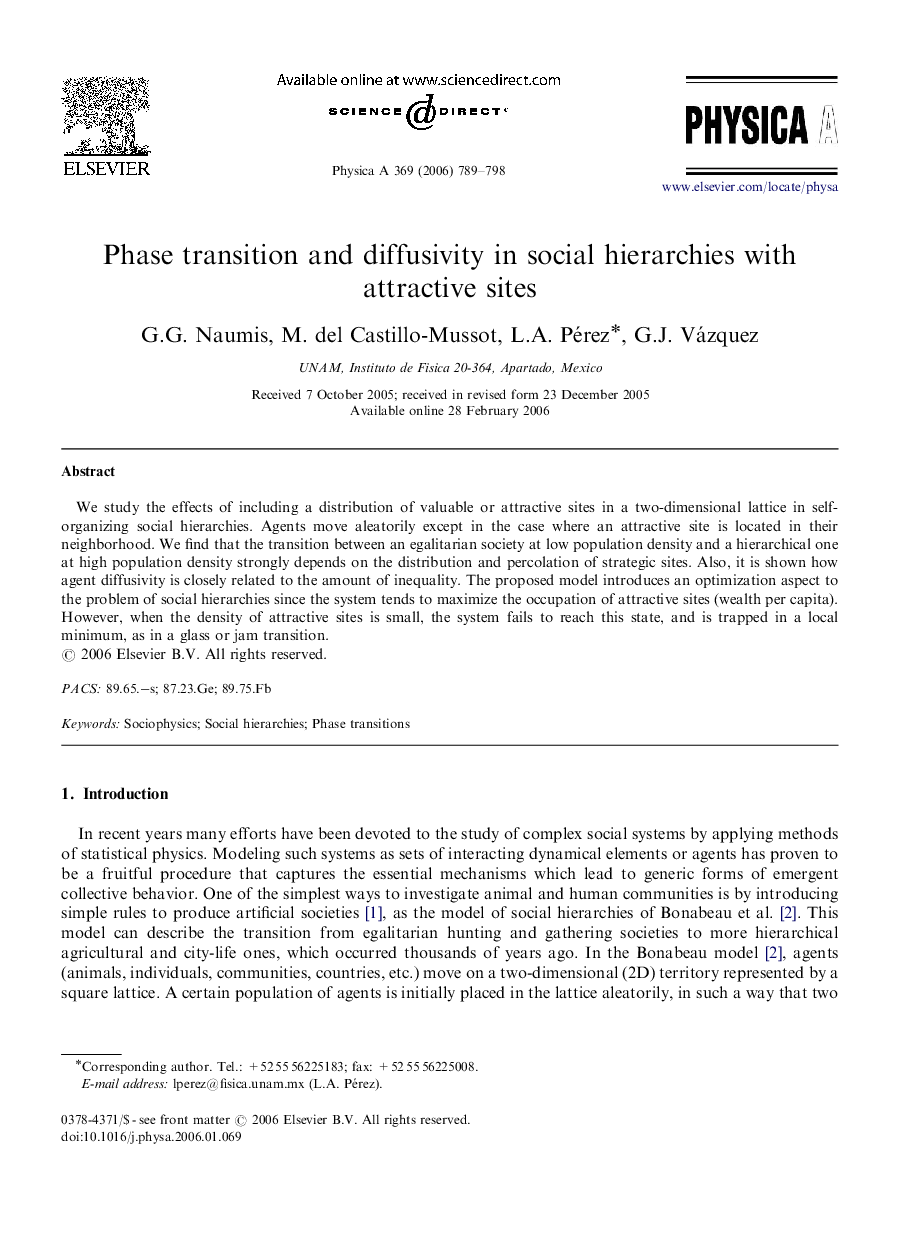| Article ID | Journal | Published Year | Pages | File Type |
|---|---|---|---|---|
| 979760 | Physica A: Statistical Mechanics and its Applications | 2006 | 10 Pages |
Abstract
We study the effects of including a distribution of valuable or attractive sites in a two-dimensional lattice in self-organizing social hierarchies. Agents move aleatorily except in the case where an attractive site is located in their neighborhood. We find that the transition between an egalitarian society at low population density and a hierarchical one at high population density strongly depends on the distribution and percolation of strategic sites. Also, it is shown how agent diffusivity is closely related to the amount of inequality. The proposed model introduces an optimization aspect to the problem of social hierarchies since the system tends to maximize the occupation of attractive sites (wealth per capita). However, when the density of attractive sites is small, the system fails to reach this state, and is trapped in a local minimum, as in a glass or jam transition.
Related Topics
Physical Sciences and Engineering
Mathematics
Mathematical Physics
Authors
G.G. Naumis, M. del Castillo-Mussot, L.A. Pérez, G.J. Vázquez,
